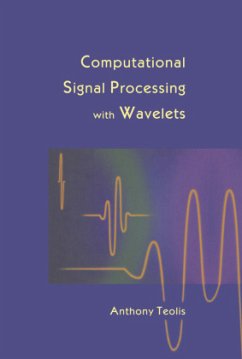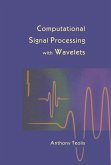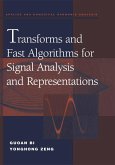Overview For over a decade now, wavelets have been and continue to be an evolving subject of intense interest. Their allure in signal processing is due to many factors, not the least of which is that they offer an intuitively satisfying view of signals as being composed of little pieces of wa'ues. Making this concept mathematically precise has resulted in a deep and sophisticated wavelet theory that has seemingly limitless applications. This book and its supplementary hands-on electronic: component are meant to appeal to both students and professionals. Mathematics and en gineering students at the undergraduate and graduate levels will benefit greatly from the introductory treatment of the subject. Professionals and advanced students will find the overcomplete approach to signal represen tation and processing of great value. In all cases the electronic component of the proposed work greatly enhances its appeal by providing interactive numerical illustrations. A main goal is to provide a bridge between the theory and practice of wavelet-based signal processing. Intended to give the reader a balanced look at the subject, this book emphasizes both theoretical and practical issues of wavelet processing. A great deal of exposition is given in the beginning chapters and is meant to give the reader a firm understanding of the basics of the discrete and continuous wavelet transforms and their relationship. Later chapters promote the idea that overcomplete systems of wavelets are a rich and largely unexplored area that have demonstrable benefits to offer in many applications.
"This book provides an expository treatment of wavelets from a signal processing perspective. The focus is on the expansion of signals in overcomplete wavelet systems. All illustrations of the theory are generated in the framework of the Matlab toolbox wavelet signal processing workstation (WSPW) made publicly available by the author.... The last chapter is a manual for WSPW, and the whole book serves as an extended manual." -Mathematical Reviews "This book provides a bridge between theory and practice of wavelet-based signal processing and is written for both students and professionals. A solid mathematical foundation is given in the beginning chapters [1-6].... Several applications of wavelet-based signal processing including noise suppression, signal compression, signal identification and digital communication are presented in Chapter 7. Chapter 8 gives numerical illustrations and examples of wavelet methods using MATLAB 5. The accomanying MATLAB-based software is available on the world wide web. Every chapter of the book contains a collection of exercises." -Zentralblatt MATH "A self-contained text that is theoretically rigorous while maintaining contact with interesting applications. A particularly noteworthy topic...is a class of 'overcomplete wavelets'. These functions are not orthonormal and they lead to many useful results." -Journal of Mathematical Psychology








